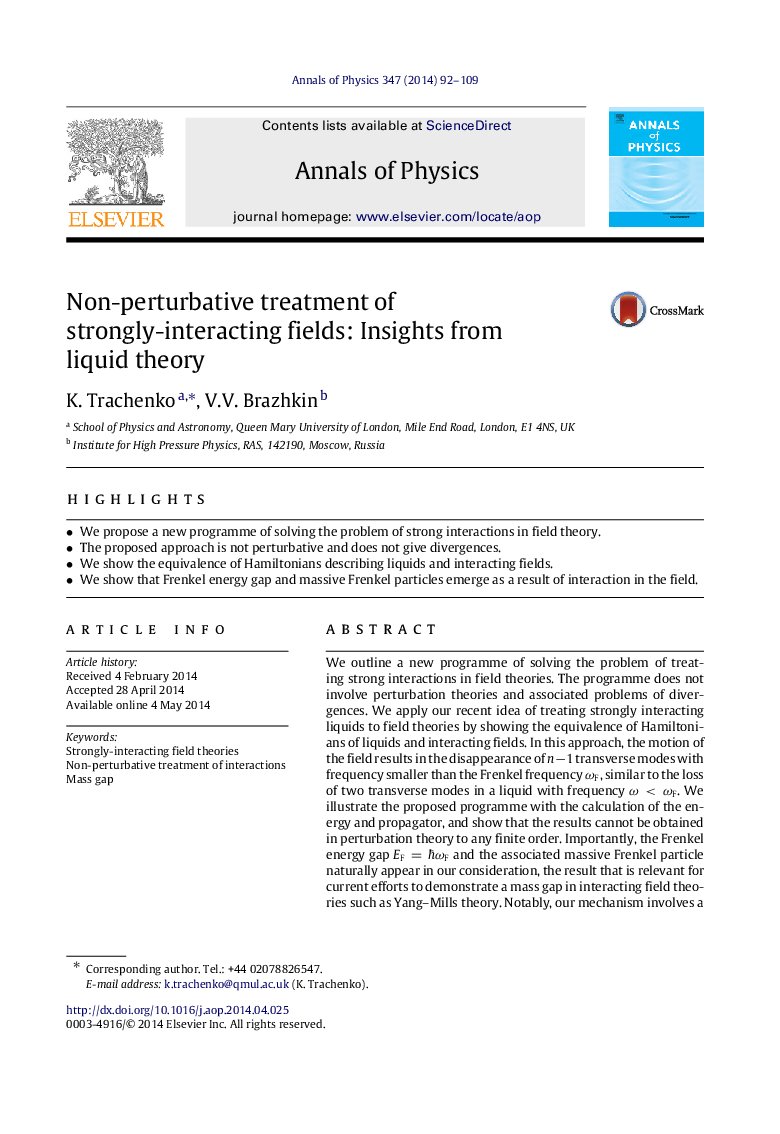| Article ID | Journal | Published Year | Pages | File Type |
|---|---|---|---|---|
| 8202538 | Annals of Physics | 2014 | 18 Pages |
Abstract
We outline a new programme of solving the problem of treating strong interactions in field theories. The programme does not involve perturbation theories and associated problems of divergences. We apply our recent idea of treating strongly interacting liquids to field theories by showing the equivalence of Hamiltonians of liquids and interacting fields. In this approach, the motion of the field results in the disappearance of nâ1 transverse modes with frequency smaller than the Frenkel frequency ÏF, similar to the loss of two transverse modes in a liquid with frequency Ï<ÏF. We illustrate the proposed programme with the calculation of the energy and propagator, and show that the results cannot be obtained in perturbation theory to any finite order. Importantly, the Frenkel energy gap EF=ħÏF and the associated massive Frenkel particle naturally appear in our consideration, the result that is relevant for current efforts to demonstrate a mass gap in interacting field theories such as Yang-Mills theory. Notably, our mechanism involves a physically sensible starting point in terms of real masses (frequencies) in the harmonic non-interacting field, in contrast to the Higgs effect involving the imaginary mass as a starting point. We further note that the longitudinal mode in our approach remains gapless, implying that both short-range and long-range forces with massive and massless particles naturally emerge and unify in a single interacting field, a result not hitherto anticipated. Finally, we comment on the relationship between our results and hydrodynamic description of the quark-gluon plasma.
Keywords
Related Topics
Physical Sciences and Engineering
Physics and Astronomy
Physics and Astronomy (General)
Authors
K. Trachenko, V.V. Brazhkin,
